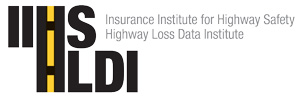
 |
|
February 15, 2018
ARLINGTON, Va.— The Institute recently shared an advisory on aftermarket repair parts with its member companies as part of periodic updates on topics of particular interest to insurers. Since this issue is also of interest to other organizations and consumers, the Institute is making the advisory publicly available.
The advisory addresses the safety of aftermarket parts as they relate to crash tests that a contract test lab conducted for a Dallas law firm representing two people seriously injured in a 2013 crash.
The law firm alleges that it uncovered "drastic" differences in crash test outcomes between an unmodified Honda Fit and two other Honda Fit minicars outfitted with certain aftermarket parts not sourced from the original equipment manufacturer (OEM). The tests, based on the IIHS moderate overlap front test protocol, were widely covered in the collision repair trade press.
IIHS engineers have examined the crash test details and videos the firm has shared publicly. They compared them against the Institute's own evaluation of the 2009 model Fit in the moderate overlap front test.
Based on a scientific analysis of the data, the Institute concludes that the Fit equipped with non-OEM aftermarket parts in the law firm test performed on par with the 2009 Fit evaluated by IIHS, with across-the-board good scores for structure, injury measures, and restraints and kinematics.
The variation across the three law firm tests is similar to what IIHS has observed conducting repeated tests of identical model vehicles. The Institute's evaluation of the publicly shared results hasn't uncovered concerns about the aftermarket parts used in the law firm's demonstration tests.
The issue of the safety of aftermarket repair parts warrants serious study, and it is one that the Institute has examined several times during the past 30 years.
Aftermarket parts fall into two categories: cosmetic and structural. Previous IIHS research has shown that cosmetic parts don't alter crash test results, so where they are sourced—whether aftermarket or OEM—is irrelevant.
Fenders, quarter panels, door skins, bumper covers and trim aren't responsible for safeguarding occupants in a crash. That is the job of structural parts.
Structural parts make up the front-end crush zone and safety cage. The crush zone absorbs crash energy, and the safety cage helps protect occupants by limiting intrusion.
Replacement structural parts must exactly replicate the original parts to preserve the integrity of a vehicle's crashworthiness, whether they are sourced from the OEM or an aftermarket supplier. IIHS research shows that some aftermarket non-OEM parts can meet these requirements.
